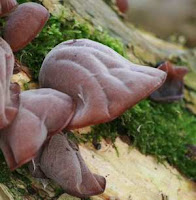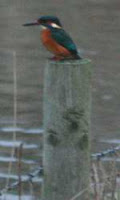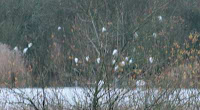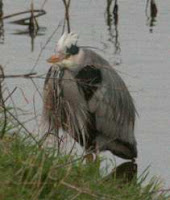The long snowy spell for the last week or so has been beautiful, although a bit treacherous at times. The number of birds outside our kitchen window has increased dramatically, going from 2 blackbirds initially to about 10 once word had got around; there were 4 robins and 10 starlings, some standing on top of each other. We've had to put out prodigious amounts of seeds and peanuts, as well as keep the water bowls free of ice - and bread at times. A red squirrel visited us a couple of times.
The view towards High Street and Haweswater has been amazing:
Viv and I made a couple of snow robins, although it looks very bloody:
On short walks towards Knipe Scar, we've seen lapwings and fieldfares by the small streams nearby, along with a grey wagtail. The stonechat high in the ash tree confused us initially as these aren't normally so high. Further on we saw fallow deer nipping away through the woods, and interesting tracks through the snow.
Can you suggest a caption for the photo of this wren underneath a large rook's nest?
We found time for the odd snowball, but quite powdery snow so it didn't hurt, though cold going down your neck.
Can you see why this local feature is called "the eyebrows":
After being out, we've treated ourselves to some pancakes, made using soya milk and no eggs as normal:







